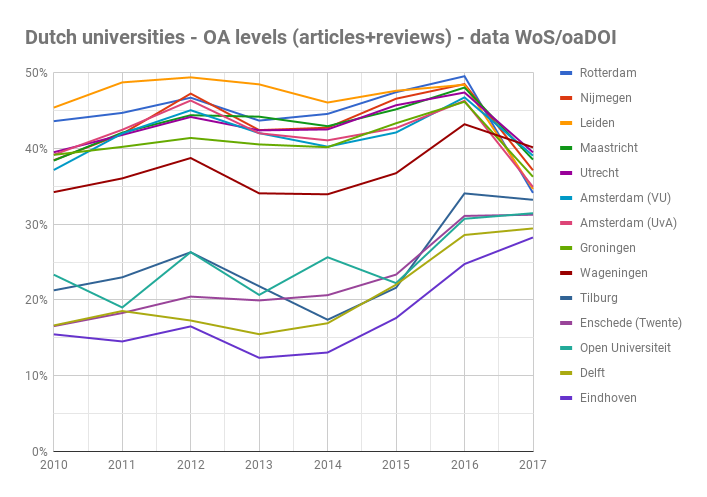
Horizon Europe may be the name for Horizon2020 successor
The European Commission has embarked on a series of research programs. Before Horizon2020 it was Framework Program (FP) 7. Then came Horizon2020 (aka FP 8) and now its end is approaching. As a result, the European Commission has been working on the next program (FP 9) that follows it. The name for the next program remained illusive. It seems the EU loved Horizon and the succeeding program might settle with Horizon affixing ‘Europe’ to its ending. That means ‘Horizon Europe’ will be the most likely name for the next program (FP 9).
The name Horizon Europe is not made public yet. It will be made public when the commission will unveil its next program (FP 9) in June, Science Business reported. Read more on Science Business

French research institutions, following the measure taken by their counterparts in Germany, refused to agree on a new deal with Springer, one of the leading academic journals publishers. As a result, there is no new contract between the French research institutions and Springer Nature since the beginning of 2018.
According to Times Higher Education report, Couperin, an organization representing the interests of more than 250 French institutions, and Springer Nature discussed over issues pertinent to signing a new deal for more than a year. Nevertheless, the discussion failed to bring the two negotiating parties closer. It ended with a disagreement.
For years, universities and research institutions have struggled to cope up with growing journal subscription fees. Obviously, the source of contentions between Springer Nature and French institutions is over the cost of journal subscriptions. Though Couperin demanded lower subscription fees, Springer Nature refused to accept it; rather it demands fee increase. Moreover, research funders in the UK also have concerns over the ever-increasing and unsustainable cost of subscriptions. However, Springer Nature argues that this kind of challenge has a limited impact on their business because the negotiation does not target all the journals they publish.
There is a growing assertiveness from research institutions. Standing up to the traditional publishers such as Elsevier and Springer Nature and challenging the status quo has become the new norm.
It is serial crisis, high rate of journal subscription fees in the 1990s, that ushered a new era of open access. Open access has been promoted as a solution that reduces subscription burden and also removes access barriers to scholarly materials. Read more of Times Higher Education

Open Access is the future
The survey conducted by Springer Nature demonstrates that the vast majority of research institutions, academicians and librarians from around the world believe that open access is the future of scientific publishing.
According to this survey more than 70% of the respondents believe that all future scientific research output should be accessible via open access platforms.
The survey was conducted in 2017 on 200 people.
The majority of the respondents have no doubt that the move towards fully embracing open access will be achieved- two thirds believe this will be accomplished with in the coming 10 years.

The future of anonymous peer-review
The standard approach to publish a scientific research output is through peer-review, a process through which independent experts scrutinize papers submitted for publication and evaluate their quality and integrity. For years, peer review has been the accepted tool to guarantee the quality of scientific papers.
Based on their expertise and independent assessment of the paper, reviewers advice editors what to do: publish it or reject. They indicate issues that need to be addressed through critical comments, which, traditionally, are only accessible to authors and editors. The rejection rate of papers is high, particularly in high impact factor journals. Usually authors are blamed for this. There is high competition among authors to publish on high impact factor journals. This makes the work of some authors to miss the high bar; the major reason given for rejection. This is not to say that reviewers are free from blame. But authors point their fingers at reviewers. The main criticism directed against reviewers are bias, inconsistency, abuse of peer-review and time it takes. This has led to increasing call for open peer-review: making reviewers’ comments and identity accessible to the public.
According to a survey conducted by OpenAIRE2020 on 3000 individuals, 60% of the respondents supported the idea of publishing reviewers’ comments. According to Philip Campbell, editor-in-chief of Nature, 62% of authors have demonstrated keen interest to see reviewers’ comments online. Elsevier’s research demonstrates that out 259 people invited for a pilot project 70% participated in an open peer-review. Moreover, 45% of the participants do not see any problem with unmasking their identity. Nonetheless, only 2% of journal publishers give full access to them.
Peer review is usually anonymous: the authors and the public don’t know who reviewed a certain paper. But there is an ongoing discussion about the need to reveal the reviewers’ identity in order to increase the transparency of the review process. On the other hand, others argue that the risk outweighs potential benefits: reviewers might decline to participate. Nevertheless, so far this idea has not garnered enough support; the RAND Europe survey showed that only 3.5% of journals have a policy of unmasking the identity of reviewers. Read more

According to the research conducted by Jeroen Bosman and Bianca Kramer, in the Netherlands a significant number of peer reviewed articles are published on open access journals. That means open access accounts for 42% of all peer reviewed papers published in 2016. The study also found out that, since 2015, there is upward trend in open access publications in the country. The research did not explain the reason behind.
The research highlights that most of the papers are published on Gold and Hybrid open access journals; only 5% of open access papers are available through Green open access. This means that authors or research funders are paying Article Processing Charges (APCs) to publish these papers on open access platforms. This comes with a substantial APCs. Though it differs from journals to journals, APCs can be as high as 3000 Euros.

